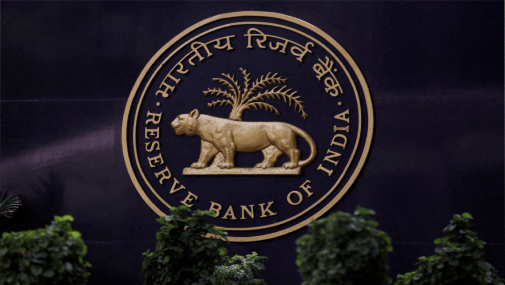DRYING EUROPEAN RIVERS
August 27, 2022 | Expert Insights

A drought-like situation in EUROPE? It may sound absurd, but it may soon be a reality if nature's warnings are not heeded. Modern agriculture, with its global supply chains, has ensured the smooth flow of food from fertile production areas to anywhere in the globe where food is in demand. Famine has passed into our collective memory as only in the remotest corner of Africa, cut off by war and conflicts, do human beings still starve of hunger. However, this may yet change due to a combination of climate change and conflicts.
Europe is experiencing its worst drought in decades, and experts warn that water shortages may soon become "the new normal." Climatologists predict drier winters and sweltering summers in the temperate latitudes of Europe due to global warming.
The European Commission released a ‘serious situation’ warning to all its members as the EU Drought Monitor declared 45 per cent of the bloc’s territory under drought warning by mid-July, with 15 per cent already in the red zone.
Background
Like all civilisations, the mighty rivers of Europe have given birth to its great cities and cultural centres and acted as the sinews of its industrial might. Cheap waterborne transportation linking its industrial centres with its coal and ore-producing areas created a vast amount of wealth over the last two centuries. Now the same rivers are under stress.
Today, France's longest river, the Loire, can be crossed on foot in some places; it has never dropped so drastically. The Rhine is becoming increasingly impassable for ferries. The Po River in Italy is 2 meters lower than usual, crippling crops. The Danube is being dredged in Serbia. Volumes of water stored in reservoirs in Spain are currently 31 per cent less than the 10-year average.
Hotter temperatures increase evaporation, thirsty plants absorb more moisture, and restricted winter snow constrains fresh water supplies to the river systems. Agriculture, one of the largest consumers of water, finds its groundwater running out, and with little or no rain, farmers tap the already shrinking rivers.
For a pampered society used to an uninhibited supply of natural resources like water for their daily consumption, it is a wake-up call when worried governments impose water-use restrictions. The flow of barge traffic on the Rhine and the Danube rivers is down both in tonnage being hauled and the size of the ships allowed to navigate. This is spiking the price of coal for power plants at a time when Russian gas is being shut out.
Dry drought-like conditions in Europe are not something that Europe should be surprised by; since the beginning of this century, there have been periodic extremely dry spells, and high temperatures and poor rainfall have become common. Blamed on climate change and rising temperatures, these were glossed over as mere discomforts in Europe’s changing weather patterns. However, this time around, the situation is much more serious.

Analysis
According to a study, drought-related damages in the European Union (EU) were anticipated to be around 9 billion Euros yearly. The agriculture, energy, and public water supply sectors typically bear the lion's share of these losses, primarily due to water insecurity. These sectoral losses are likely to represent only a portion of the actual drought impacts merely because indirect, or intangible impacts, such as detrimental reactions to the ecosystem and public health, are more challenging to examine and quantify.
The biggest concern is the energy sector which is already facing a cold winter with no gas for its consumers or for generating electricity. The French nuclear control board granted a momentary exemption to five nuclear plants to discharge hot water into rivers, potentially violating environmental standards. France's rivers may not be vital freight corridors, but they do serve to cool the nuclear power plants that generate 70 per cent of the country's electricity.
Trade is suffering as cheap water transportation has to be replaced by already congested rail traffic and trucks running on expensive fossil fuels. With an average depth of about one meter in many places, the Rhine, one of the world's busiest waterways for coal and oil, is no longer navigable. Similarly, the Po River, Italy's longest navigable river, is too low to allow major ships to enter it. Freight on the Danube's 2,850km stretch has also been wholly hampered, forcing authorities in Serbia, Romania, and Bulgaria to begin dredging while a long line of barges back up.
The agricultural ministry in Hungary has confirmed "historic" drought damage affecting 550,000 hectares of land. Torrid heat and arid conditions have hindered corn and sunflower production and forced rice farmers to slash plantings in Italy's Po valley, home to about 30 per cent of the country's farm productivity, after the river tumbled to its lowest level in 70 years.
The bitter irony is that the EU's efforts to combat climate change rely heavily on the waterways. The European Commission's green transition plans call for a 25 per cent increase in the inland waterway and short-distance sea shipping by 2030. The 95.5 billion-euro Horizon Europe fund assists funding in shallow-water boats and engineering work to make shipping lanes more consistent.
Assessment
- Europe is one of the drivers of the global economy as much of the export from Asia Pacific land in the EU. The drought-like conditions, along with the economic impact of the Ukrainian war, are going to pull down European growth rates, which are bound to have a spillover effect on the rest of the global economy.
- It does not bode well for emerging economies like India as currently EU is India's second-largest trading partner after U.S and the second largest destination for Indian exports.
- Drought impacts may not necessarily follow the pattern of hazard intensity, demanding a drought evaluation that goes well beyond hazard. Without a common European strategy, drought management should be included in national legislation to promote national endurance to drought.








Comments